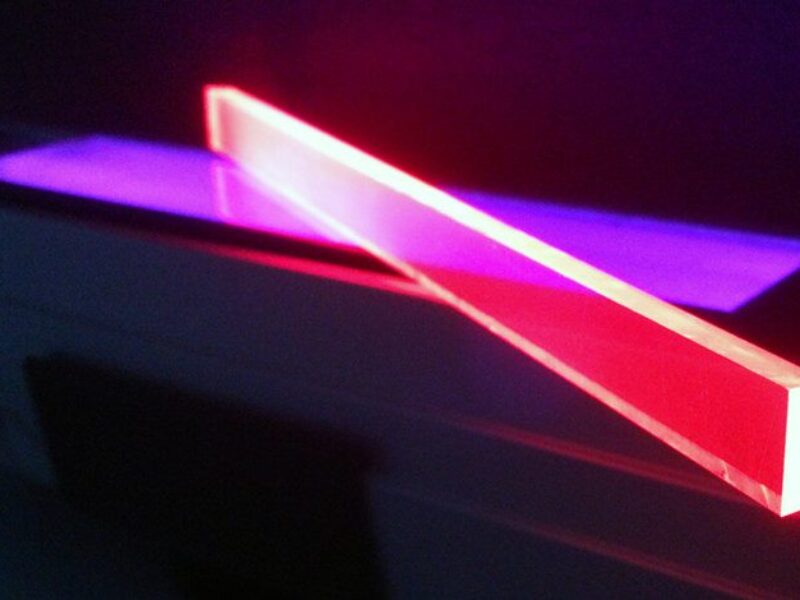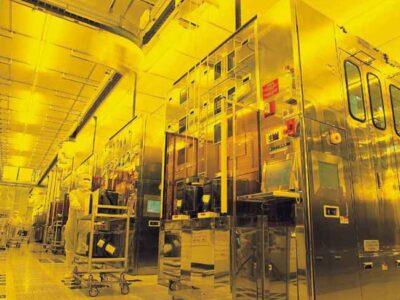
Quantum dot solar concentrator opens energy harvesting window
Researchers at the Los Alamos National Laboratory in collaboration with scientists from University of Milano-Bicocca (UNIMIB), Italy have shown that the superior light-emitting properties of quantum dots can be applied in solar energy by helping to harvest sunlight more efficiently.
“The key accomplishment is the demonstration of large-area luminescent solar concentrators that use a new generation of specially engineered quantum dots,” said lead researcher Victor Klimov of the Center for Advanced Solar Photophysics (CASP) at Los Alamos.
The emission color of quantum dots can be tuned by simply varying their dimensions. Color tunability is combined with high emission efficiencies approaching 100 percent. The properties have become the basis of a new technology – quantum dot displays – employed, for example, in the newest generation of the Kindle Fire e-reader.
A luminescent solar concentrator (LSC) is a photon management device, representing a slab of transparent material that contains highly efficient emitters such as dye molecules or quantum dots. Sunlight absorbed in the slab is re-radiated at longer wavelengths and guided towards the slab edge equipped with a solar cell.
Klimov said: “The LSC serves as a light-harvesting antenna which concentrates solar radiation collected from a large area onto a much smaller solar cell, and this increases its power output.”
“LSCs are especially attractive because in addition to gains in efficiency, they can enable new interesting concepts such as photovoltaic windows that can transform house facades into large-area energy generation units,” explained Sergio Brovelli, who worked at Los Alamos until 2012 and is now a faculty member at UNIMIB.
Because of highly efficient, color-tunable emission and solution processability, quantum dots are attractive materials for use in inexpensive, large-area LSCs. One challenge, however, is an overlap between emission and absorption bands in the dots, which leads to significant light losses due to the dots re-absorbing some of the light they produce.
To overcome the problem the Los Alamos and UNIMIB researchers have developed LSCs based on quantum dots with artificially induced large separation between emission and absorption bands (called a large Stokes shift).
The ‘Stokes-shift’ engineered quantum dots represent cadmium selenide/cadmium sulfide (CdSe/CdS) structures in which light absorption is dominated by an ultra-thick outer shell of CdS, while emission occurs from the inner core of a narrower-gap CdSe. The separation of light-absorption and light-emission functions between the two different parts of the nanostructure results in a large spectral shift of emission with respect to absorption, which reduces losses to re-absorption.
To implement the concept, Los Alamos researchers created a series of thick-shell (so-called ‘giant’) CdSe/CdS quantum dots, which were incorporated by their Italian partners into large slabs (sized in tens of centimeters) of polymethylmethacrylate (PMMA). While being large by quantum dot standards, the active particles are tiny being about hundred angstroms across.

“A key to the success of this project was the use of a modified industrial method of cell-casting, we developed at UNIMIB Materials Science Department,” explained Francesco Meinardi, professor of Physics at UNIMIB.
Spectroscopic measurements indicated virtually no losses to re-absorption on distances of tens of centimeters. Further, tests using simulated solar radiation demonstrated high photon harvesting efficiencies of approximately 10% per absorbed photon achievable in nearly transparent samples, perfectly suited for utilization as photovoltaic windows.
Despite their high transparency, the fabricated structures showed significant enhancement of solar flux with the concentration factor of more than four. The results indicate that ‘Stokes-shift-engineered’ quantum dots represent a promising materials platform that may enable the creation of solution processable large-area LSCs with independently tunable emission and absorption spectra.
The research paper entitled ‘Large-area luminescent solar concentrators based on ‘Stokes-shift-engineered’ nanocrystals in a mass-polymerized PMMA matrix’ is published online in Nature Photonics.
Related articles and links:
News articles:
Nanotechnology smartphone battery fully charges in 30 seconds
Are quantum dot solar cells commercially viable?
Samsung spots startup’s quantum-dot potential
 If you enjoyed this article, you will like the following ones: don't miss them by subscribing to :
eeNews on Google News
If you enjoyed this article, you will like the following ones: don't miss them by subscribing to :
eeNews on Google News



